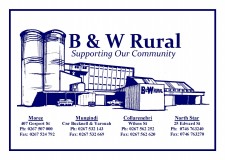Mimosa Management Summary
General Guidelines for Woody Weed Control
Application Timing: Application timing is critical for the control of woody weeds with foliar products.
Weeds such as Mimosa and Boxthorn typically have a very large root mass and getting product into the root mass is essential for effective
control. At flowering, typically after summer rain for Mimosa and often after the autumn break for Boxthorn, the plant takes energy and
nutrients down to build the root structure. Foliar applications at flowering, get more product to the roots which dramatically increases
the efficacy.
Coverage: 100% foliar coverage is essential for a good kill. One small branch that is missed is enough
to allow the plant to survive. Ensure that applicators cover the whole plant, shortcuts simply lead to poor results.
Mimosa Management Summary April 2018
Treatment Techniques

1) Mechanical (12 months prior) and Chemical (mulch and spray regrowth)
2) Chemical (spray application and pellets)
Project Details
A site location map and complete treatment list is available on the Mimosa project page:
Results 12 months post application
To date there have been two assessments. Indications following the second assessment are as follows:
| Treatment |
Results |
Key Considerations |
|
Graslan 2g/m |
+ 85% brownout |
<$1,000/Ha chemical and application Flexible Application timing Cannot be used near trees |
| Grazon Extra 500ml, Lontrel Advance 150mL, Stinger 20g and Pulse 100mL |
Ave 83% brownout |
Application at flowering Good coverage may increase application costs in thick areas of infestation. |
| Lontrel Advance 250mL and Pulse 100mL |
Ave 81% brownout |
Application at Flowering Average $2,163/Ha (Application and Chemical). Good coverage may increase application costs in heavy infestations ($681 to $3.345/Ha) |
| Mulching followed by Lontrel Advance 250mL and Pulse 100mL 12 months later |
Ave 77% brownout |
Application at Flowering Average $793/Ha (Application and Chemical) Application costs were less ($396 to $882/Ha) as access was easier following mulching. |
![]()
Slashing or mulching the Mimosa significantly reduced application costs, but the level of control has been less, principally due to the
reduced leaf area relative to the root area.
Important Links: http://www.woodyweedspecialists.com.au/
http://graslan.com.au/wp-content/uploads/2017/06/graslan_technote_web-2.pdf
Mechanical / Physical Removal Cutter Bar and Blade Plough
The stick rake physically removes the bulk of the bush. This is followed by a modified cutter bar designed to remove the roots, ploughing to a depth of approximately 28-30cm. Roots not removed are likely to re-shoot. Regrowth may occur soon after treatment or in the two to three years post treatment.
Control Guidelines for African Boxthorn
African Boxthorn (Lycium ferocissimum) is easier and cheaper to kill than Mimosa. The most effective Mimosa treatments will do quite a good job on Boxthorn and most contractors use the Mimosa treatment on a mixed infestation as Mimosa control is usually the main aim
A standard mix often used for the control of Boxthorn is:
- 200 mls/100 L glyphosate
- 10 -15 g/100 L metsulfuron
- 200 mls/100L wetter 1000
Application during flowering is most effective. The concentration of glyphosate is deliberately low to allow slow uptake into the plant and down into the root system. Higher glyphosate rates will burn the leaves off too quickly. The old rule of thumb is - if you kick a Boxthorn and leaves fall off then that is probably all the chemical will do.
Land Management Considerations
 Growers looking to engage in management of Mimosa, African Boxthorn or Harrisia Cactus should contact the NW Local Land Services to discuss
their specific situations.
Growers looking to engage in management of Mimosa, African Boxthorn or Harrisia Cactus should contact the NW Local Land Services to discuss
their specific situations.
https://northwest.lls.nsw.gov.au/sustainable-land-management/land-management
Mimosa:
Mimosa occurring without a treatment history may require approval prior to clearing. Treatment options ranging from spot spraying to cropping are available. Prior to treatment landholders either notify Local Land Services or receive a clearing certificate depending on the treatment selected. We recommend landholders contact Local Land Services for advice prior to deciding which treatment to use.
Mimosa that has had a legal clearing treatment/control history post-1990 can be treated without approval under the Land Management (Native Vegetation) Code 2018 (LMC 2018), Part 4 Division 1, Continuing Use. Please note the treatment must be the same or have the same effect. A change in method may require formal approval from Local Land Services prior to treatment.
African Boxthorn or Harrisia Cactus
Management of African Boxthorn or Harrisia Cactus fall under the Biosecurity Act 2018. If no change in land use is proposed, contact your Local Weeds Authority for further information.
If a change in land use is proposed, i.e. a change from grazing to temporary or permanent cropping, or the treatment involves the temporary or permanent removal of groundcover other than Harrisia, then approval may be required. Several options are available, please contact the Local Land Services for advice.
